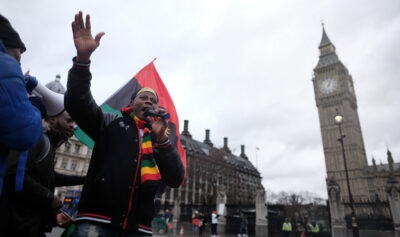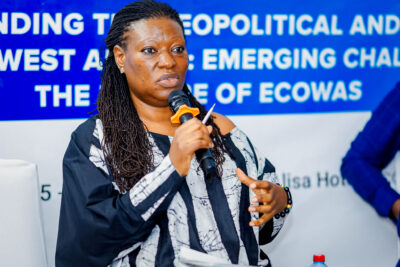The notion of religion as somehow private has informed the modern era in a host of ways. Most are misleading but also constitutive of social practices and understandings.
It is not that religion simply was in every sense private. On the contrary, from the Social Gospel to Vatican II and Liberation Theology, as well as in more conservative forms it was recurrently part of both national and international public life. The distinction is not that of personal piety from more outward forms of religious practice, though this has been a significant distinction. Indeed, established churches have suffered some of the greatest declines in religious adherence. Religion has flourished most where it has felt like a personal commitment, but this has not meant that it had no public implications.
Rather, the ‘privacy’ of religion has been bound up with (a) the notion that religious convictions were to be treated as matters of implicitly personal faith rather than publicly authoritative reason, and (b) the idea of a separation from the state (which was as much a demand for states not to interfere as for particular religious views not to dominate states). In the former sense religious freedom could be recognized as a right, but it was implicitly always a right to be wrong or to have a peculiar taste, and thus not to have matters of faith arbitrated by the court of public opinion. In the latter sense, religion was private in something of the same sense that property was private: it could be socially organized on a large scale, but was still seen as a matter of individual right and in principle separate from affairs of state.
The Peace of Westphalia, for example, established a framework for seeing sovereignty as secular and religion as private (or essentially domestic) with regard to the relations among sovereigns. Bringing a series of partially religious wars to an end, it helped in 1648 to usher in an era of building ideally national states, as well as the very idea of international relations. While most of the post-Westphalian states were actually confessional, the ideal-type was secular. The academic discipline of international relations, not least as it recast itself after World War II, incorporated this secularist assumption about states and their interests into its dominant intellectual paradigms. It requires a considerable effort today for international relations specialists to think of secularism as a substantive position on states rather than virtually a defining feature of states, as a “something” rather than an “absence.”
This issue is more widespread, for in general religion is seen as a presence, and secularism is casually understood as its absence. But of course secularisms are themselves intellectual and ideological constructs and traditions. They differ with different political histories – and also with different juxtapositions to religious claims on and in the public sphere. China is secular in a different sense from India and each from France. Attempts to suppress or at least manage religion, to treat different religions equitably, and to ignore religion are different secularist projects – they are not merely secular. And of course there are more variations on this theme – states that fund multiple religions, states that grant all religions special privileges, states with established official religions that nonetheless demarcate substantial secular spheres within which religious claims or institutions are expected not to intrude.
Throughout the so-called Westphalian era, religious actors and religious fields of discourse have played important public roles. Religion has never been essentially private. Rather, the Westphalian frame of discourse constructed a particular misrecognition of the way religion figured (or didn’t) in public life. And if the Westphalian frame did this for international affairs, others did it domestically. Jürgen Habermas’s account of the public sphere and its transformations, for example, pays almost no attention to religion (although his recent work does – see my next post). The error here is not simply Habermas’s own, but rather his participation in reproducing and extending an Enlightenment tradition of imagining religion outside the frame of the public sphere. This was tendentious, since empirically religion figured prominently in public life (though it was widely understood as fading). The Enlightenment theorists and many successors were not reporting on social reality so much as seeking to construct a reality in which religion would be outside the frame of the public sphere.
Modernity has hardly been an era of simple secularism, then, though of course few would interpret the secularism thesis so simplistically. The “postsecular” cannot be a reference to moving beyond a historical past so simplistically conceived. It can be a matter of moving beyond particular projects of achieving mutual understanding and conceiving of progress in entirely secular (and especially universalistic and nonsubstantive) terms. In this sense, thinking about postsecular public reason can potentially be helpful for improving the way we think about new projects of mutual understanding and social solidarity based on choice rather than mere imposition or inheritance. In particular, postsecular thinking may help us see some limits in many existing approaches to cosmopolitanism and some ways of enriching the pursuit of cosmopolitan ideals.
The ideal of cosmopolitanism is today rendered overwhelmingly in political terms. Citizenship of the world is a theme of political philosophers concerned with human rights, peace, and the responsibilities all humans owe each other. Even while these philosophers seek to transcend the nation-state, they somewhat ironically understand citizenship largely in the jural terms states have given the concept and in the logic of equivalence the rhetoric of nationalism has encouraged in domestic discussions. Most of these cosmopolitans are heirs of Enlightenment and French Revolutionary humanism, as well as more distantly of Diogenes Laertius, so this is not surprising.
Religion is likely to figure in the global future to an extent that most cosmopolitan theories have not considered. It is not just one among the various sources of diversity to be recognized and accommodated. There are also a number of religious projects that are direct competitors to secular cosmopolitanism, not because they are backwardly or defensively parochial but because they aspire to occupy the same space, providing moral and cultural and sometimes even political frameworks for global integration. Several religious traditions have produced transnational discursive fields of great scope and complexity. They mediate migrations as much as any secular accounts of cosmopolitan universalism. They inform relations among nations and among activists across national borders. The great world religions are internally diverse and polyvalent and not automatically forces for good or evil – any more than, say, nations and nationalisms are. But at least as much as nations and nationalisms it would be unwise to build social theories that in effect wish religion away, imagine it a fading inheritance from the past, or a private ‘taste’ that can be kept beyond the frame of the public sphere.
Cosmopolitanism is not realistically imaginable as the transcendence of all forms of belonging. To propose a leap into traditionless secular reason is to propose the tyranny of the pure ought, and indeed, an ought without a can. It is also to privilege a class and a cultural group able to identify its traditions – including secularism – with neutral reason. Global solidarity will be achieved – if it is ever achieved – by transformation of religion and other forms of cultural belonging rather than by escape from them. And it will be achieved on the basis of hope and critical perspectives and solidarity that inform public reason but are not produced simply from within it.
But the question of perspectives that should legitimately inform public discourse is not a trivial one. Indeed, religion, after all, appears prominently in contemporary politics in the form of strikingly illiberal views and positions, and in a package with practices that are difficult to condone. It also appears in more positive and even heroic forms, of course, not least as part of movements for peace, civil and human rights, and equitable development. What is normatively required of perspectives and reasons that inform public discourse? In my next post, I’ll explore critically Jürgen Habermas’s views on this vexing question.
[As part of an ongoing series of events on Rethinking Secularism, sponsored by the SSRC and the Institute for Public Knowledge, tomorrow evening Craig Calhoun will host and moderate a public dialogue at NYU on “Exploring the Post-Secular.” More details at Calhoun’s new blog, Societas.—ed.]













Do you see any possible way of reincorporating Kant’s cosmopolitan vision that is, one might argue, not so much a pro-secularist elimination of borders and national identifications, but sort of a vision of an international state of law (vis-a-vis the present international state of nature where, despite legislation, states are mostly left to their own devices)?
1. Historically it is highly problematic to discuss fundamental aspects of religion in a relatively late and—in regard to religion—rather turbulent European historical phase (Peace of Westphalia).
2. The question whether religion is essentially private and based on personal beliefs, or public and covered by state law is a fundamental aspect of religion.
3. Further, whether the state should be understood as secular or represent official religions can not be discussed on the level of rather lightweight sociological statements like: ” …in general religion is seen as a presence, and secularism is casually understood as its absence. But of course secularisms are themselves intellectual and ideological constructs and traditions.”
4. What today is called religion, can only be understood if we understand it historically as an early civilisational phenomenon.
5. In all early civilisations what we call religion today was in fact an early form of state constitution (Egypt, Mesopotamia, Israel, etc.). Physically represented deities had dominantly territorial functions, legitimating the power of rulers on the state territory defined by the deity and the corresponding temple (Egenter 2000).
6. It is fairly evident that this system evolved from a globally widespread rural tradition which had produced sedentary life in Neolithic agrarian village cultures. Deities were settlement centric toposemantic demarcations which ritually archived the local hegemony of the village founder and his house-line. (For the cultural significance of this prototype see Egenter: 1980, 1982, 1994a, 1994b)
7. Besides their territorial implications these fibroconstructive demarcations evolved with an elementary aesthetic structure (categorical polarity) which had made them (a) a perceptional model of natural form (Egenter 1981) as well as (b) a structural model of artful material culture (art, architecture, instruments, weapons, clothing, as well as spatial organisation of habitat) as well as c) a harmonious ontology which built up the primary world of “all is one and one is all” (hen kai pan) which later was split into the analytical perception of the world.
8. These anthropologically reconstructed ‘territorial roots’ of religion were historically covered up by interpreting ‘settlement foundation rites’ first on a planetary (Akhenaton syndrome), later on a modern macrocosmological level which did not exist in those times, as the history of cartography clearly demonstrates.
9. The ‘creation of the world’ was originally a local event, focussed on the foundation of a city, a state (Winckler 1906, Babylonian creation myth).
10. Modern religion, particularly in its Roman version, inexplicitly has preserved this basically constitutional character, which is, however, covered up by emphasising the private aspects of ‘personal belief’, thus shielding the political aspect.
11. Consequently, the so called ‘private character of religion’ is again, in fact, a political dimension which is clearly shown by the well organised global diffusion of its clerical hierarchy and by sacraments like e.g. ‘christening’, that is the baptism of new born children.
12. To conclude: the scientific position critical of the basically political function of religion(s) in ancient and modern times is increasingly accepted among the educated population. It would mean that the secularisation of the state (and of the population) [like in Germany] increasingly would become the general trend.
_________________
Egenter, N.
1980: Bauform als Zeichen und Symbol – Nicht-domestikales Bauen im japanischen Volkskult. Eine architektur-ethnologische Untersuchung, dokumentiert an 100 Dörfern Zentraljapans. ETH Zürich
1981: The sacred trees around Goshonai, Japan: A contribution of building ethnology to the subject of tree worship. Asian Folklore Studies 40 (2), 191-212
1982: Sacred Symbols of Reed and Bamboo; Annually built cult- torches as spatial signs and symbols. Swiss Asiatic Studies Monographs vol.4, Zürich
1994a: Architectural Anthropology – Semantic and Symbolic Architecture. An architectural-ethnological survey into hundred villages of Central Japan. Editions Structura Mundi, Lausanne
1994b: Semantic Architecture and the Interpretation of prehistoric Rock Art – An ethno-(pre-)historical approach. In: Semiotica, 100-2/4, 1994 p. 201-266
2000a: Der ewig brennende Dornbusch. Die Struktur der Theokratie im Alten Orient und das scholastische Trauma Europas. Ansätze zu einer ägypto-judäo-christlichen Religions-Anthropologie. Editions Structura Mundi, Lausanne.
2000b: The Eternally Burning Thorn Bush – The first revelation of the Old Testament in an ethno-historical perspective.
-> http://home.worldcom.ch/~negenter/22300_Thronbu_TT.html
Kerschensteiner, J.
1962: Kosmos: quellenkritische Untersuchungen zu den Vorsokratikern. Munich, Beck